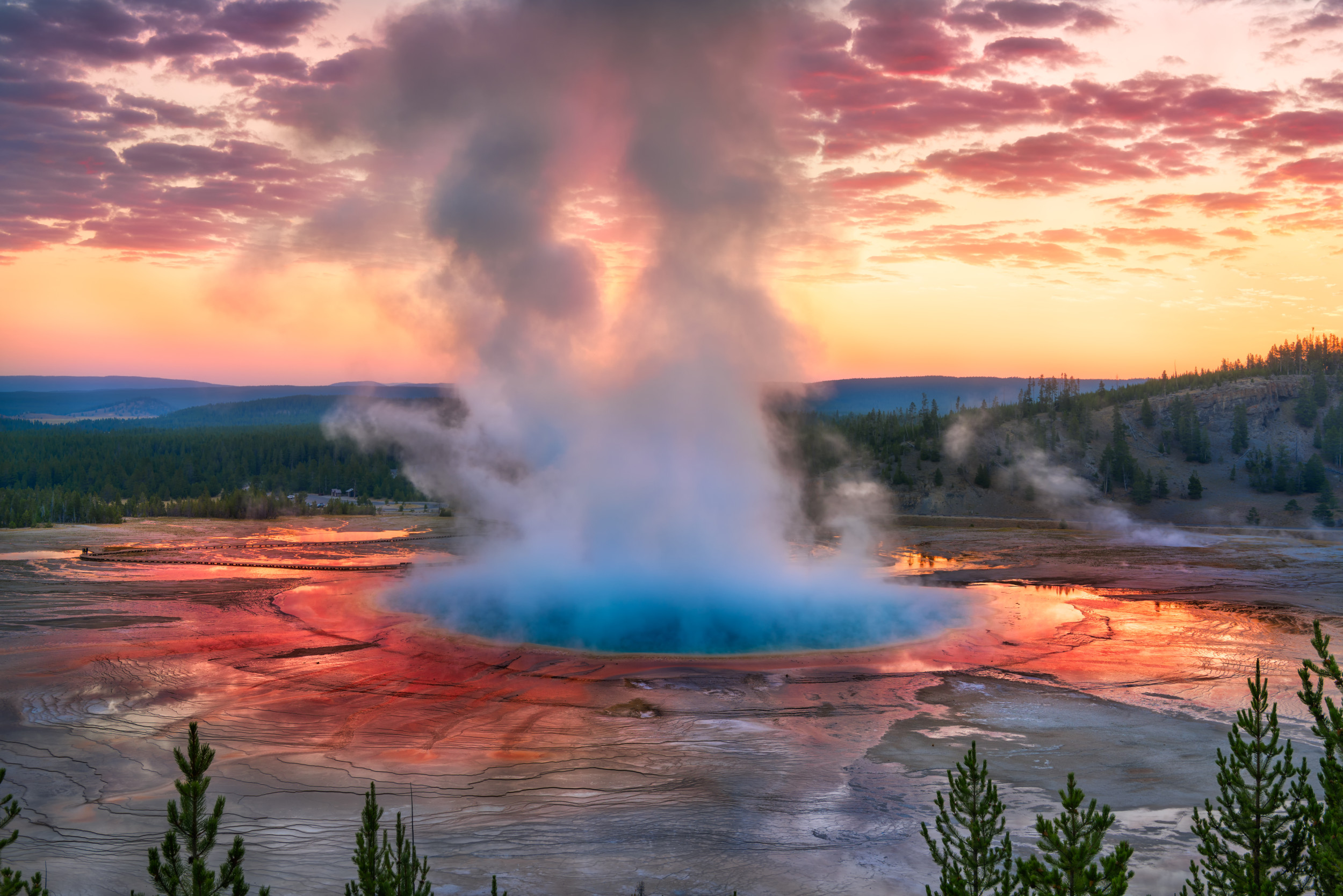# Yellowstone National Park Researchers Discover New Microbes Living in Hot Springs
A recent study at Yellowstone National Park has uncovered previously undiscovered groups of microbes thriving in the park’s hot springs. This scientific breakthrough reveals two new groups of methanogens, called Methanomethylicia and Methanodesulfokora, which are single-celled organisms that produce methane.
Unlike humans and other animals that rely on oxygen and food for survival, methanogens consume molecules like carbon dioxide and emit methane as a byproduct. These newly identified microbial groups challenge the longstanding belief that all methane-producing microbes belonged to a single group known as Euryarchaeota. The discovery of Methanomethylicia and Methanodesulfokora indicates that methane-producing microbes are more diverse than previously assumed.
Microbiologist Roland Hatzenpichler from Montana State University, one of the authors of the study, highlighted that prior to this research, only the DNA of these microbes was known, and their actual cellular existence and metabolism were a mystery. The imagery of these microbes has never been captured until now.
While Methanodesulfokora predominantly resides in hydrothermal springs and deep-sea vents, Methanomethylicia is more widespread, inhabiting environments ranging from wastewater treatment plants to marine sediments and animal guts. These methanogens play a crucial role in methane production, a greenhouse gas significantly more potent than carbon dioxide in trapping heat in the atmosphere.
The rapid increase in methane levels compared to carbon dioxide emissions underscores the importance of understanding the mechanisms by which Methanomethylicia and Methanodesulfokora contribute to methane production. By exploring whether these microbes utilize methanogenesis in less extreme environments, researchers aim to mitigate methane emissions, contributing to environmental preservation.
Notably, the research was funded in part by NASA’s exobiology program, which is intrigued by methanogens as they offer insights into ancient Earth life and the potential for life on other celestial bodies where methane is present.
The painstaking effort to collect samples from Yellowstone National Park, particularly following a recent eruption near the Biscuit Basin, highlights the challenges researchers faced. Extracting microbes from sediment samples in Yellowstone’s hot springs, which reach temperatures between 141 and 161 degrees Fahrenheit, the team successfully cultivated and observed their methane-producing capabilities in a laboratory setting.
Studies on Methanomethylicia also unveiled a unique characteristic – the formation of cell-to-cell tubes connecting multiple cells, a phenomenon that remains enigmatic. These structures, previously unseen in microbes, hint at potential DNA or chemical exchanges among the organisms. The implications of such interactions await further exploration.
In conclusion, the Yellowstone study offers significant insights into microbial diversity and methane production, with broader implications for climate change research and astrobiology. The mysterious world of these newly discovered microbes opens doors to understanding Earth’s ancient history and potentially discovering life beyond our planet.
